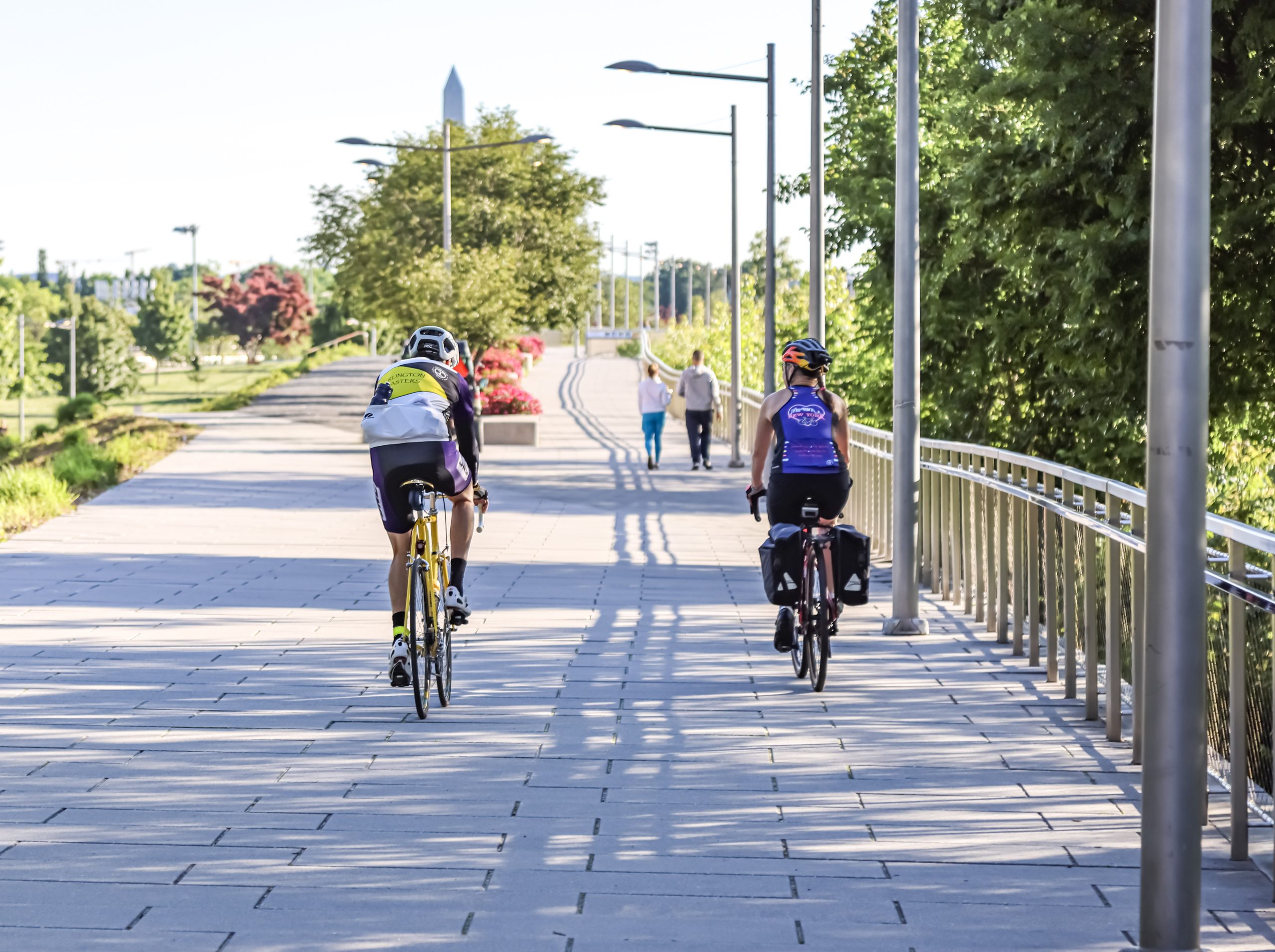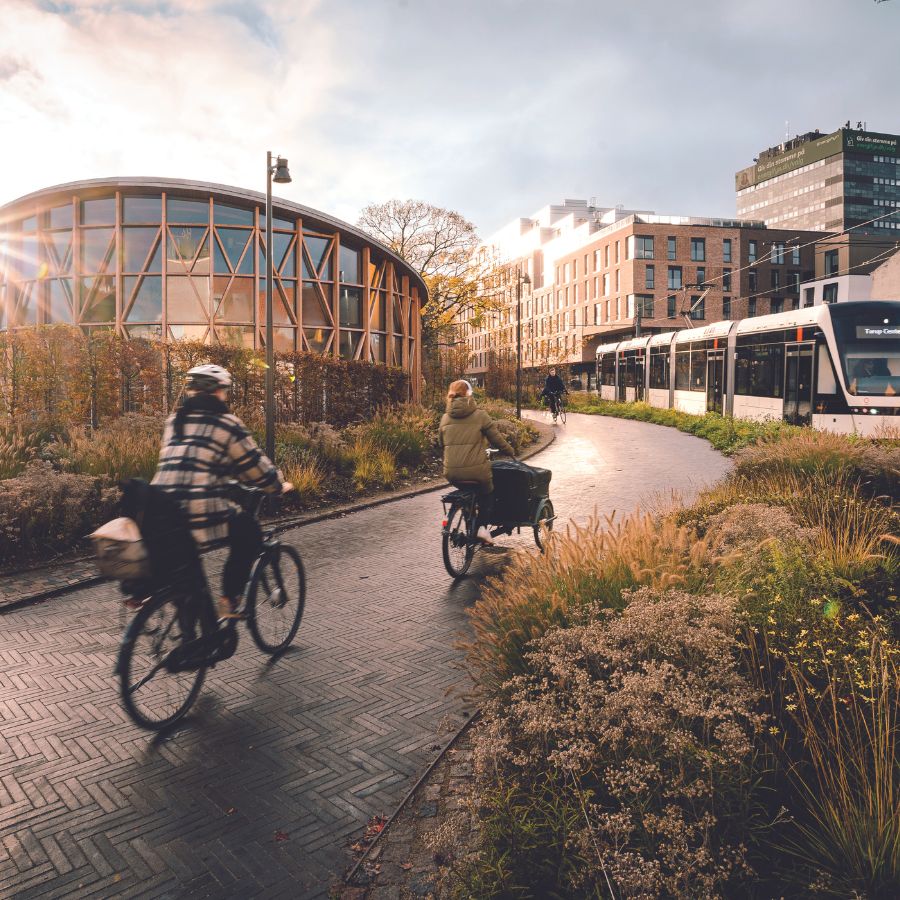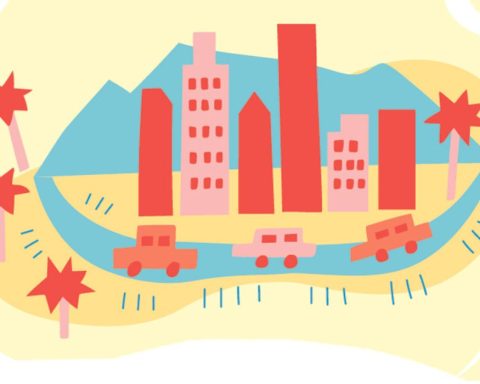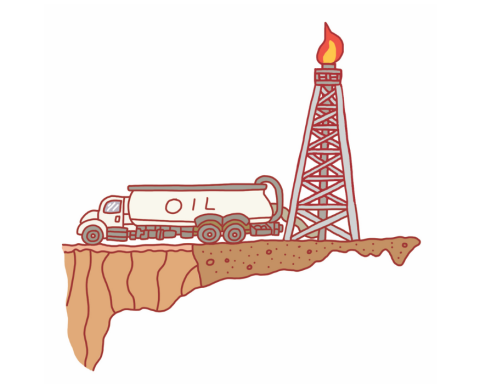Just 20 years ago, the Danish city of Odense was an industrial hub. Back then, Maersk, one of the world’s largest shipping companies, operated a shipyard on the city’s harbour front that manufactured some of the largest container ships in the world and employed almost 3,000 workers.
The presence of heavy industry was felt throughout Odense for decades. Its first shipyard opened in 1918. A four-lane highway – named after Danish industrialist Thomas B. Thrige – carved through the city centre, splitting it in two.
This all started to change after the global financial crisis of 2007/2008. The crisis, coupled with international competition, led to the Maersk shipyard closing in 2012. But where other industrial towns started falling into disrepair, Odense experienced a rapid post-industrial transformation into a high-tech hub. And the secret to that metamorphosis partly involves two wheels.
When heavy industry started to leave Odense, the city needed to reinvent itself with a new strategic vision. Elected officials wanted to draw a new type of industry: tech and robotics. They had to change the way the city thought about urban design and mobility so that car traffic flow wasn’t the top priority.
For Joost Nijhoff, the head of economic growth and tourism at the City of Odense, it was a given that Danish people cycled everywhere. But some of the tech companies he pitched Odense to asked whether the city had a subway system. With around 200,000 residents, that wasn’t something the city could deliver (although Odense does have a light-rail system now), but it did have superior cycling infrastructure.
“It suddenly became an issue of ‘How is the bicycle infrastructure?’” he says. “Because they realized that cars are so expensive in Denmark that a family could not afford a second car. But what they can afford is an electric family cargo bike where you have two kids in front of you and maybe one at the back.”
The Danish city, where 19% of trips are taken by bike, has long had superior cycling infrastructure compared to other parts of the world. In Paris, a city praised for its recent investments in bike infrastructure, just 11% of trips are done on bicycles. Odense has 560 kilometres of cycle lanes, as well as 65 tunnels and 125 bridges exclusively for cyclists. But it’s taken its commitment to sustainable transportation to another level.
“We turned the hierarchy upside down,” says Peter Rahbæk Juel, the mayor of Odense. “Now we’re thinking what is the best [thing] to do . . . for having good conditions for pedestrians and people on bikes.”
It paid off being ambitious. You need some old-style courage to move your city in the right direction.
– Peter Rahbæk Juel, mayor of Odense
In recent years, the city redeveloped a chunk of its city centre and shut off car traffic to the Thomas B. Thrige roadway to build a new automobile-free district with bike lanes, squares, parks, retail and restaurants. Local leaders say these efforts have brought investment to the area and have helped make Odense a place where new industries can thrive, draw talent and retain it. “It’s part of what makes Odense attractive,” says Rahbæk Juel, who uses cycling as his primary means of transportation. “It’s a green city. It’s a city where you can breathe, you can live, and it’s a part of the lifestyle that you can go by bike.”
It’s hard not to feel like the city is ascending. In 2019, Meta, then Facebook, opened a data centre in Odense. American robotics company Teradyne has bought two Odense start-ups and is building a new facility to house them. In recent years, the city centre has come to life with an increase in cafés, bars and restaurants. And Odense, which was named after Odin, the Viking god of war, and was the birthplace of Hans Christian Andersen, has become a growing tourism destination, even making The New York Times’s 52 Places to Go list in 2023.
“It paid off being ambitious,” Rahbæk Juel says. “You need some old-style courage to move your city in the right direction.”
Could this happen in North America?
Being bike-friendly is only natural for a Danish city. During the global oil crisis of the 1970s, Denmark decided to make itself less dependent on foreign fossil-fuel producers by becoming a leading cycling nation. Any North American bike advocate would drool at the country’s cycling infrastructure. But even in car-centric North America, there’s a growing understanding among urban leaders that building out their bike infrastructure and making their cities more walkable helps attract investment and business.
In 2013, at the opening of a new protected bike lane, Chicago’s then-mayor Rahm Emanuel declared that his city was becoming a tech hub thanks to the cycling infrastructure being built there. He drew a straight line between Chicago’s growing investments from the tech sector and its progress building more bike lanes. “You cannot be for a start-up, high-tech economy and not be pro-bike,” he said at the time.
That sentiment has been true for National Landing, a Virginia neighbourhood just across the Potomac River from Washington, D.C., which Amazon chose as the location of its second headquarters, HQ2. The e-commerce giant opened its facility last summer with an indoor bike cage with 620 racks and two repair stations.
In 2017, Amazon announced it was planning to open a new corporate headquarters somewhere other than its original head offices in Seattle. The company released a request for proposals, inviting cities to pitch themselves, and in that document, Amazon asked cities to include information about bike lanes that commuting employees could use.
Local leaders in National Landing say the area’s existing cycling infrastructure, as well as commitments to invest further in active transportation, made the area particularly attractive to Amazon. (Of course, US$750 million of tax subsidies from the state of Virginia helped, too.) When Amazon chose National Landing, the area had 2.7 kilometres of protected bike lanes, which has grown to 4.5 kilometres (with more than 18 kilometres total). This may seem small when compared to Odense, but it’s not bad for a U.S. neighbourhood with only around 24,000 residents. More bike lanes are in the works, and the area also has a bike share with more than 20 stations.

Since the early 2000s, local governments have worked to transform the once car-centric place into a people-centred environment. Roughly 75% of trips taken in National Landing, which is also now home to Boeing and a Virginia Tech campus, are by modes of transportation that are not cars, such as bike, walking and public transit.
“We knew that in order to accommodate growth and to attract both residents and employers, we would need to compete on place,” says Tracy Sayegh Gabriel, the executive director of the National Landing Business Improvement District. “One of the essential ingredients [that] workers, residents and visitors alike are seeking is highly walkable, bikeable and vibrant public realms and urban environments.”
Michael Anderson, an urban policy analyst who wrote a report about how protected bike lanes helped urban economies boom in the United States after the great recession, says that the competition to attract economic investment nowadays is largely a competition to attract people. And for the last few decades, Anderson says, jobs have chased people rather than the other way around. “So to the extent that you can create a pleasant city to spend time in – one that’s built for human interaction, health and subjective well-being, among other things – you are also creating a place that will attract employers and investment,” he says. “Bike infrastructure isn’t the only ingredient in that recipe for a city that people want to live in, but it’s good at being one of the ingredients.”
Back in Odense, the local government is working to further cement its place as a modern green city where young people want to study, work and live. The city is striving to be carbon-neutral by 2030. For Rahbæk Juel, that means getting even more people riding bikes. “We are not there yet, but we have plans and we’re striving to be sustainable. It’s not just good for the climate,” he says. “It’s also good for the city if you can walk the talk on that narrative. I believe we are close to walking the talk in Odense . . . We have some steps on the road yet.”
Alex Robinson is the Ottawa-based deputy editor at Corporate Knights.






